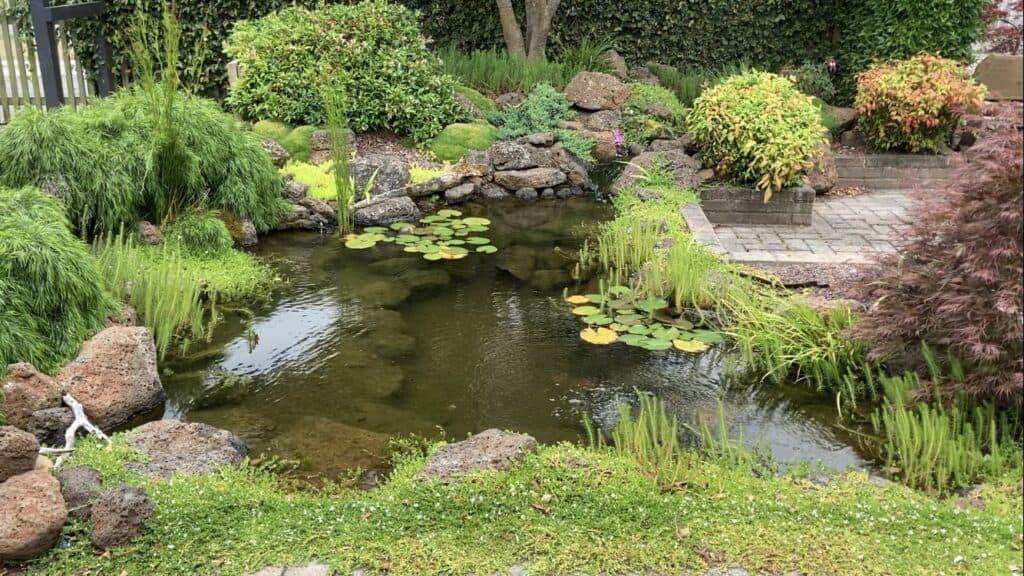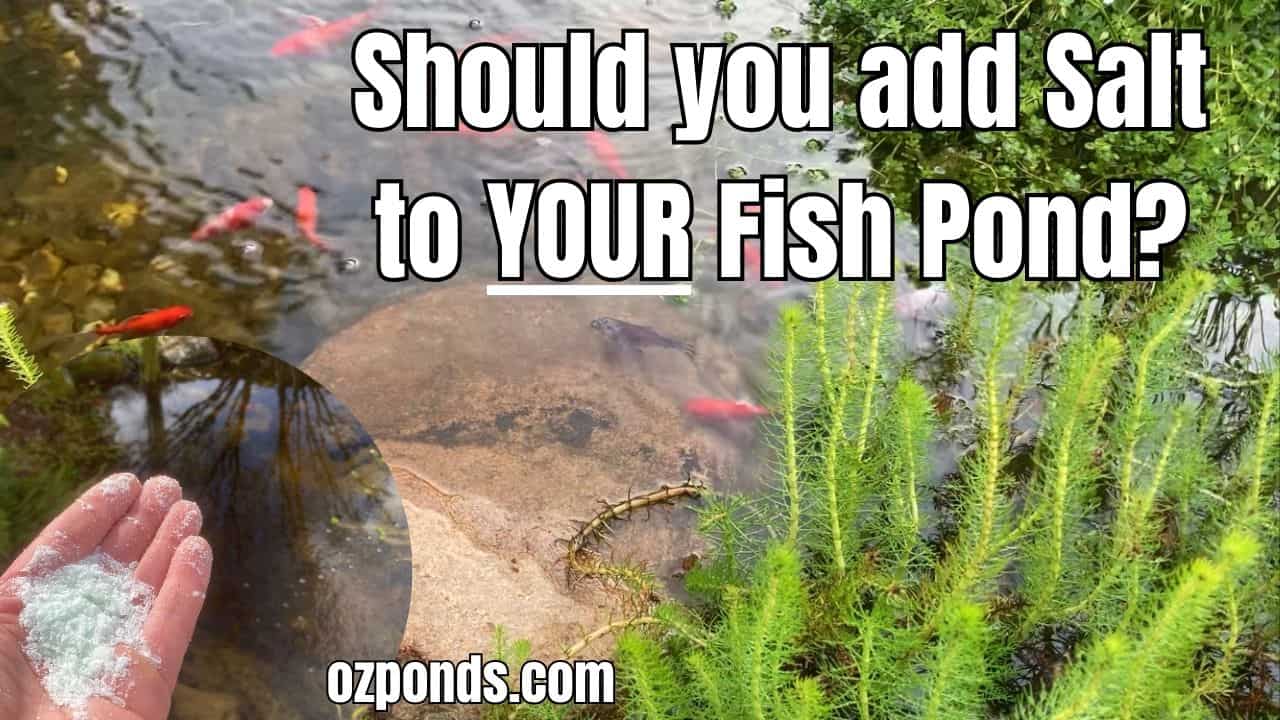Whether you’re new to pond keeping or just looking for ways to enhance fish health, salt is a natural and affordable remedy that’s worth considering.
In this article I’ll do my best to explain the benefits of salt and some dosage rates if you are thinking of using salt in your pond. If you would prefer to watch a video here’s a YouTube video on made on the topic.
Why Add Salt to a Freshwater Pond?
Salt is an incredibly useful additive for freshwater ponds and aquariums. It helps with osmosis and supports the slime coat on your fish. Here’s a breakdown of how it works.
Fish living in freshwater environments naturally have a higher salt concentration inside their bodies than the water they swim in.
Due to osmosis, water continually enters their bodies, and salts inside their systems tend to diffuse out into the surrounding freshwater. To maintain balance, fish use energy to transport salts back into their bodies.
When you add salt to the water, this process becomes less energy-intensive, helping your fish stay healthier without expending as much energy. This is especially important if your fish are stressed or sick, as it reduces the strain on their bodies.
Salt Can Be Used As a Medicine For Sick Fish
Another important benefit of adding salt is its ability to kill certain bacteria and parasites that may be harmful to your fish. Salt can act as an affordable and effective treatment compared to expensive medications.
Salt works as a medication by:
- Helping to kill harmful bacterias and parasites that may be attacking the fish.
- Reducing the energy they expend on osmosis. Very useful for fish that are already under stress.
- Improves the fishes slime coat, effectively improving their natural defences against illness.
How Much Salt Should You Add?
For ponds and aquariums, we generally aim to keep salt levels at or below 0.3% salinity. Saltwater, like what you find in oceans, has about 3.5% salinity.
General Salt Dosage
In ponds, it’s typically safe to keep the salt concentration at 0.3%—this translates to 3 grams of salt per litre of water.
For those of us using gallons. In the U.S., a gallon of water equals about 3.8 litres, and 3 parts per thousand would equate to around 41 grams of salt per gallon.
Salt Dosage on Sick Fish
If you need to treat a sick fish, it’s often better to remove the fish from the pond and treat it in a separate tank where you can precisely control the salinity.
Most fish can tolerate 6 parts per thousand or 6 grams per litre. This is double the dosage rates above.
Some Native Australian fish can easily handle higher salinity levels. It’s always best to research your specific fish species before proceeding.
Best Practices for Using Salt
One important note: Fish can tolerate a sudden increase in salinity better than a sudden drop.
When you’re done treating your fish in a higher salinity solution, you’ll want to gradually lower the salt levels by performing slow water changes over a few days.
Salt doesn’t evaporate, so if you’re topping up evaporated water with fresh water, the salinity remains the same.
Choosing the Right Salt
You can use regular sodium chloride (salt), but make sure it doesn’t contain any added iodine or other chemicals that could harm your fish. A digital salinity meter (Amazon link) or refractometer is useful for monitoring salt levels to ensure you’re within the safe range.
If you are worried you can buy pond or aquarium salt (Amazon link) and be sure its safe for use with fish.
Will Salt Affect Pond Plants and Beneficial Bacteria?
At the levels discussed here, salt shouldn’t harm your pond’s beneficial nitrifying bacteria. These bacteria thrive even in saltwater environments.
Will salt affect plants in the pond?
At 0.3% Salinity the plants will be fine. If the salt concentration exceeds freshwater levels, it can damage or kill your plants.
Another reason why you should avoid treating the entire pond with salt (at high medication dosages),especially if you have a lush plant ecosystem.
So, Should You Add Salt to YOUR Pond?
Like most things in pond care, it depends. While salt is a valuable tool for treating sick fish or quarantine setups, I personally focus on water quality and filtration in my ponds.
A healthy ecosystem with good water quality often negates the need for salt treatments. For filtration, I rely on bog filters, which provide a natural and effective way to maintain water quality.
If you’re managing an overstocked koi pond or frequently feeding your fish, adding a little salt might be helpful.
For natural ponds with good filtration and balanced ecosystems, salt may not be necessary.

Blueprint I use to build my ponds
- All the numbers I use to design my ponds, delivered straight to your inbox
- These formulas have helped people all over the world build beautiful, low maintenance ponds, without spending a fortune.
- Access to a private community of like minded people and a chat bot that loves answering pond related questions.
Final Thoughts
While I don’t typically add salt to my ponds, it is something I use in my aquariums where fish are more densely stocked, and feeding is more frequent.
If you’re considering adding salt to your pond or aquarium, it’s important to monitor salinity levels and ensure the fish species you keep can tolerate the salt concentration. A water monitor like the kactoily 7-in-1 (Amazon link) is something I’ve tried and tested and found useful.
As always, I hope this guide was helpful! Thanks for reading!

Join my free email list
If you would like to join my free email list click the button below.
I promise I won’t spam you, I’ll only send information I think can help you save money building and maintaining a pond.

